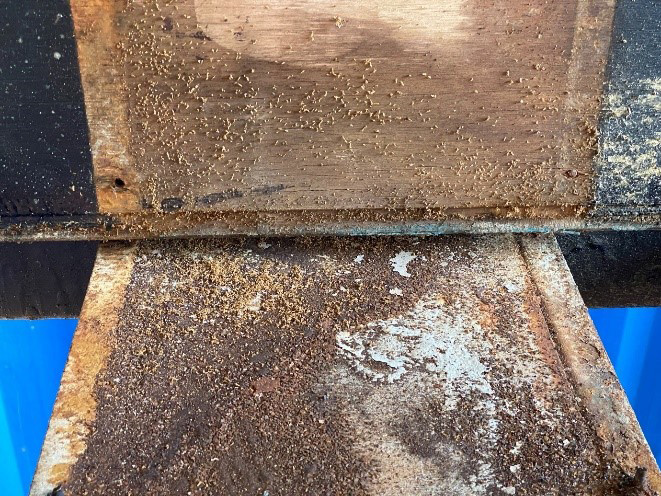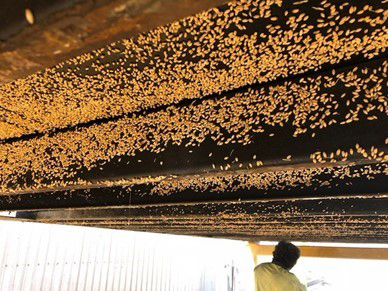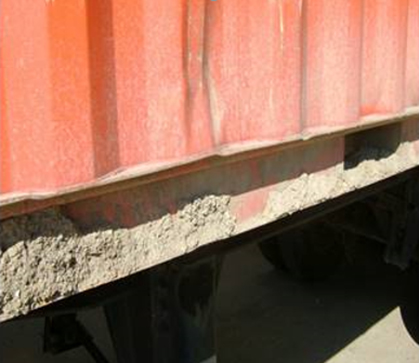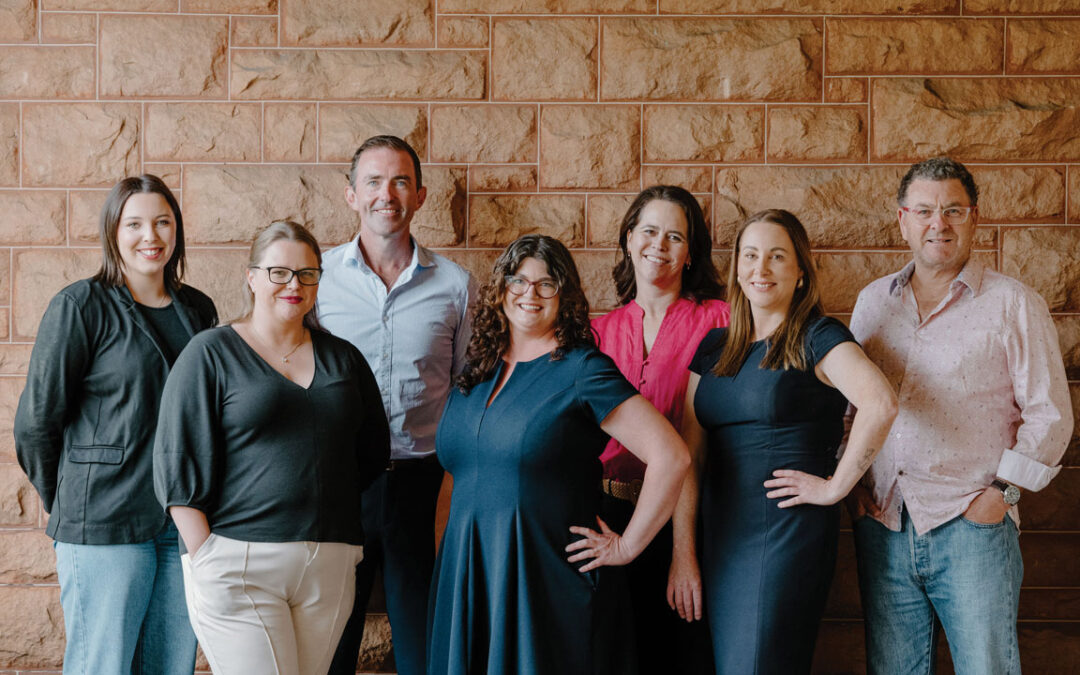EVERY year, more than 241 million containers cross the oceans to bring us everything from food and medicines to raw materials and luxury handbags. Trade is the glue holding the global economy together, and our societies cannot grow and prosper without it. But it carries some risks – pests and plants can be carried in cargo and containers across the world and cause serious damage if they manage to invade new biospheres. Now, industry and government are coming together under the International Plant Protection Convention (IPPC) to develop new solutions to prevent the transfer of invasive species between continents via the sea container pathway.

Heavy khapra beetle infestation detected in the space between forklift tyne and wooden floorboard.
Image courtesy of the Australian Department of Agriculture, Fisheries and Forestry
The risk of hitchhiker pests via sea containers and imported goods is significant and potentially costly. For example, an outbreak of khapra beetle in Australia alone is estimated to cost $15.5 billion over 20 years in eradication costs and in lost markets.
Given the sheer volume of trade, the diversity of goods and the range of routes connecting continents, stopping invasive species without hindering international trade or making it prohibitively expensive, is a daunting challenge. But under the International Plant Protection Convention (IPPC), industry and regulatory authorities are working together to find practical and effective solutions that reduce the risk of hitchhiker pest movements globally.
One such potential solution under consideration is to investigate if the structure of sea containers can be modified to reduce the possibility of hitchhiker pests being carried.
The Australian Government has commissioned a project with Murdoch University’s Harry Butler Institute to research this solution. They are looking into structural design improvements that could reduce spaces in sea containers that can harbour hitchhiker pests and where contaminants could collect.

Seeds in interfaces between container wall and floor.
Image courtesy of the Australian Department of Agriculture, Fisheries and Forestry
Four international shipping container industry bodies have co-operated with the Australian Government to support setting the strategic direction of Murdoch University’s research project. This includes the Container Owners Association, World Shipping Council, Institute of International Container Lessors and Bureau International des Containers.
Murdoch University’s research is also one of the innovative solutions being considered by the IPPC’s Sea Container Focus Group (SCFG). These solutions aim to minimise pest risks associated with sea container movements.
“We commonly find hitchhiker pests in the interfaces around floors and supporting structures of sea containers, including the underside of containers,” says Rama Karri, Director, Hitchhiker Working Group, Australian Department of Agriculture, Fisheries and Forestry and the Pacific Plant Protection Organisation representative on the IPPC’s Sea Containers Focus Group. This includes cross members, floor joists, forklift pockets, corner fittings, the floor-wall interface and container corners.
The cracks and crevices in the wooden flooring of sea containers are also an area of concern. “These cracks and crevices result from normal wear and tear. Unfortunately, they provide significant gaps for pests and plant material to accumulate,” notes Rama. “This provides easy access for hitchhiker pests to the subfloor spaces. It also provides ideal opportunities for hitchhiker pests to seek refuge and travel,” he adds.

Seed contamination on the underside of a sea container.
Image courtesy of the Australian Department of Agriculture, Fisheries and Forestry
This is commonly seen with khapra beetle. Khapra beetle can survive in cracks and under wooden floorboards of sea containers for several years without food. “When exposed to favourable conditions like a food source such as grain residue,” states Rama, “khapra can re-emerge. The beetle population can then increase rapidly, leading to contamination of any goods held within the container.”
Professor Simon McKirdy from Murdoch University explains that: “Structural modifications to container designs to minimise hitchhiker pest risks is a proven concept. An example of this is Chevron Australia who have invested significant resources into sea container re-design”.
Modifications included replacing wooden floorboards with steel floors. The result was a significant reduction in hitchhiker pest and contaminant risks. “The learnings from the Chevron work, along with further research and field trials of alternative designs, could identify improvements to container structures in the future,” adds Simon.

Soil contamination on the side of a container.
Image courtesy of the Australian Department of Agriculture, Fisheries and Forestry
Patrick Hicks, General Secretary of the Container Owners Association notes: “The container shipping industry is committed to finding global actions to minimise pest contamination in the container pathway. As part of this effort, we should also look at possible modifications to the container design. At the same time, however, the continued efficient movement of sea containers is vital to avoid major disruptions to global trade. Even small delays in movement can result in broad and costly ramifications for international supply chains. There must also be recognition of the typical container replacement cycles. That is why regulatory authorities and industry must work together and come up with practical and cost-effective solutions”.
Several countries have enforced notable regulations, and certain global supply chains have embraced best practices to minimise hitchhiker and contaminant risks. They prescribe measures to prevent the entry of pests and contaminants, pesticide or heat treatment to manage those that may have found their way into containers, and inspection regimes to detect hitchhiker organisms. Inspections and treatments will never be fool-proof and all take time and add cost. That is why the parties in the supply chain and the IPPC see prevention through structural changes as a preferred way forward, with the design of containers being a key area of development.
The IPPC Secretary, Mr. Osama El-Lissy says that “the international community appreciates the public-private partnership in addressing potential pest risks associated with the global movement of sea containers while at the same time avoid unnecessary delay of trade”.
For more information please contact plantstakeholders@aff.gov.au
Background
The IPPC
IPPC is a treaty signed by member countries of the Food and Agriculture Organization (FAO) of the United Nations in 1951. The main objective of IPPC is to protect plant resources from pests and diseases, thereby promoting food security, facilitating safe trade, and protecting the environment.
IPPC Resources:
- About IPPC – IPPC – International Plant Protection Convention
- Sea Containers – International Plant Protection Convention (ippc.int)
- Sea container supply chains and cleanliness (fao.org)
- IPPC Guidance on Sea Container Cleanliness (fao.org)

BIC
The Bureau International des Containers (BIC) was founded in 1933 under the auspices of the ICC as a neutral, non-profit, international organization. BIC seeks to promote efficiency, safety, security, standardization and sustainability in the container supply chain. Publisher of the BIC Code Register since 1970, BIC also operates the BoxTech Global Container Database (bic-boxtech.org), the BIC Facility Code Database, and the Global ACEP Database. BIC holds observer status at IMO, WCO, and UN/CEFACT. www.bic-code.org

COA
The Container Owners Association is the international organisation representing the common interests of owners of freight containers worldwide. The principle aims of the COA are to promote common standards and safe use of containers, provide technical and regulatory information and encourage environmental best practice. www.containerownersassociation.com

IICL
The Institute of International Container Lessors (IICL) is the leading trade association of the marine container leasing and chassis provider industry. IICL container leasing member companies engage in leasing marine cargo containers to ship operators and others on a broad international basis. IICL intermodal chassis provider members are in the business of owning and leasing chassis to motor carriers, ship operators, and cargo owners. The IICL, on behalf of its members is active in governmental, regulatory, customs, tax, educational, technological and environmental matters. www.iicl.org

World Shipping Council
The World Shipping Council is the united voice of liner shipping, working with policymakers and industry groups to shape the future growth of a socially responsible, environmentally sustainable, safe, and secure shipping industry. We are a non-profit trade association with offices in Brussels, London, Singapore and Washington, D.C. Read more at www.worldshipping.org.

The Australian Department of Agriculture, Fisheries and Forestry (DAFF)
DAFF safeguards Australia’s animal and plant health status to maintain overseas markets and protect the economy and environment from the impact of exotic pests and diseases. DAFF does this through risk assessment, inspection and certification, and the implementation of emergency response arrangements for Australia’s agricultural, food and fibre industries.
DAFF’s Resource: Look for hitchhiker pests






